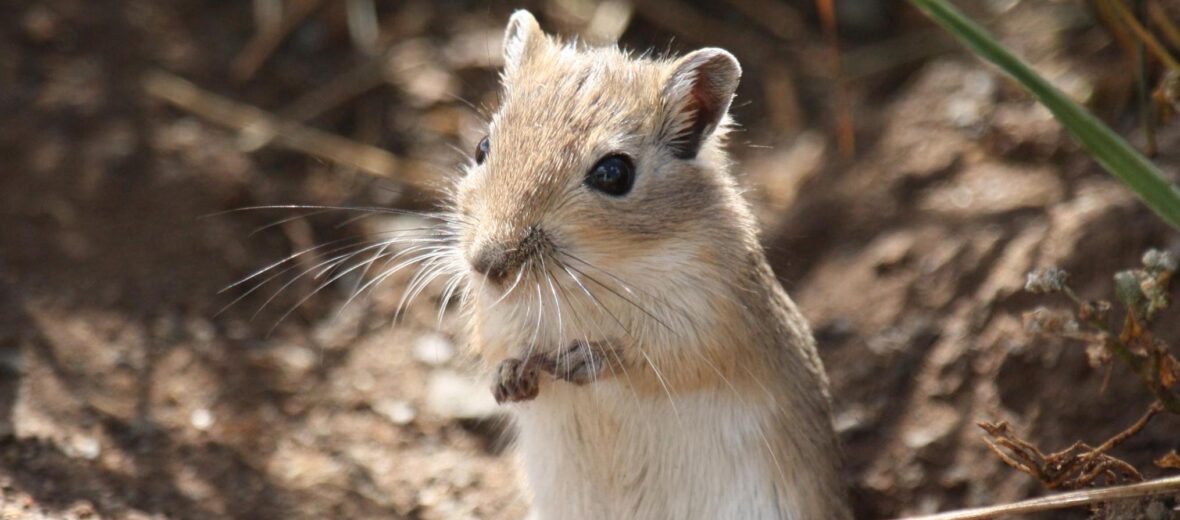
The Mongolian gerbil, aka Mongolian jird, hails from Mongolia, China, and the Russian Federation. These critters prefer grassland, desert, shrubland, semi-desert, and steppes; with grasses, herbs, and shrubs on sandy soil. Seen as a pest, they also face habitat destruction at the hands of agriculture and wildfires, as well as persecution and extermination. Still, they remain listed as Least Concern by the IUCN, with a stable population.
First the Stats…
Scientific name: Meriones unguiculatus
Weight: Up to 2 ounces
Length: Up to 4.4 inches, plus up to a 4.7 inch tail
Lifespan: Up to 3 years
Now on to the Facts!
1.) Brought to the United States back in 1954, these cute critters quickly became popular household pets.
2.) Gerbils live in social, patriarchal (led by a dominant male) colonies.
3.) Their complex burrows can contain up to 20 or more exits.
4.) Each group can patrol an area of up to 5,085 square feet.
5.) They may be social, but that is just within their own colony. Strangers, picked up by their keen sense of smell, are often chased away and are sometimes killed.
But wait, there’s more on the Mongolian gerbil!
6.) Mongolian gerbils are primarily diurnal (active during the day) with occasional patterns of nocturnality (night activity).
7.) Colonies consist of a dominant male and female and their offspring.
Did you know…?
Like hamsters, gerbils enjoy sand and dust bathing. This keeps the quality of their fur up and removes excess oils.
8.) These gerbils are herbivores (eat plant matter) that collect, cache, and eat grasses, flowering plants, berries, fruits, seeds, and grains. They’re also known for wreaking havoc on agricultural fields.
9.) They are monogamous (mate for life).
10.) Females undergo up to a 26 day gestation (pregnancy) that yields up to 8 pups.
But wait, there’s more on the Mongolian gerbil!
11.) Pups are born altricial (blind and helpless), like other rodents.
12.) Mongolian gerbils have become popular as pets, due to their friendly disposition and cleanliness. Since their kidneys have evolved to produce little waste, which conserves water, they tend to be cleaner and have less smell than other rodents, like hamsters, mice, or rats.
13.) Their primary predators are snakes, birds of prey, and humans.
Now a Short Mongolian Gerbil Video!
Be sure to share & comment below! Also, check out the Critter Science YouTube channel. Videos added frequently!
Want to suggest a critter for me to write about? Let me know here.



